The day-to-day lives of people with rare diseases is often poorly understood. And those with rare diseases face many challenges. Whether it’s going to work or studying, completing daily tasks such as preparing meals and shopping, or simply managing their health, the impact disease has on patients can be overwhelming.
Since the Orphan Drug Act was passed in 1983, treatments have been discovered for many rare diseases, yet 95% of rare diseases still have no FDA-approved treatments. Given that one in 10 Americans suffer with one of the 7,000 known rare diseases and 50% of patients are children, the scale of the problem can’t be overstated.
Rare disease patients and their caregivers are certainly desperate for treatments and cures. But equally they need help managing and navigating their care. According to EURORDIS Rare Diseases Europe, this can include researching local services, trying to access treatment and rehabilitation, dealing with administrative tasks, and adapting their home and work environment. Without coordination between services, patients are forced to repeat the same information over and over again. So, in addition to more treatment options, patients and their caregivers are crying out for improved communication between services and assistance in managing their day-to-day lives.
According to a survey from Rare Barometer, an initiative from EURORDIS-Rare Diseases Europe, seven in 10 patients and caregivers stopped their professional activity due to their or their family member’s rare disease, eight in 10 patients and caregivers struggle to cope with daily tasks, two-thirds of caregivers spend more than two hours a day on disease-related activities, and three times more patients living with rare diseases battle depression compared with the general population.
A Range of Challenges
Perhaps the greatest challenge with rare diseases is finding an accurate diagnosis. While advanced sequencing and improved data sharing have enhanced discovery and diagnostics, there are signs that gene disease discovery is slowing.
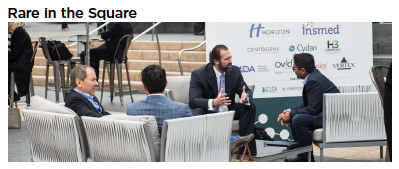 Researchers have also struggled with issues such as incidence and prevalence, understanding the economic cost of disease, assessing the burden on patients, health technology assessment, and patient access to treatment.
Researchers have also struggled with issues such as incidence and prevalence, understanding the economic cost of disease, assessing the burden on patients, health technology assessment, and patient access to treatment.
In an effort to address these issues, the International Society for Pharmacoeconomics and Outcomes Research (ISPOR) established two working groups. Since then, a call for papers was issued to gather more insights on these challenges. Nine articles aimed at addressing these issues were published in the past year to 18 months, and these are expected to help with the ISPOR initiative to address the many challenges.
For industry, the challenge is to find a way to overcome these and other issues, such as poor understanding of how the disease progresses, a non-heterogenous patient population, and finding meaningful endpoints in clinical trials.
To ensure the patient’s voice is also involved, many companies are committed to patient engagement early on in the overall trial design before establishing protocols.
Pharma companies often work side by side with advocacy groups and patients to gather insights and to help with FDA approvals. Experts in the field say patients have better knowledge of their own condition than anyone and so they are the best advocates for the needs of those struggling with rare diseases.
A Cost Consideration
The other challenge companies must address is the cost of treating rare diseases.
There have been comments from economists and scientists that companies have exploited the incentives for rare disease therapy development, and these same experts have warned a backlash against high prices is likely.
One of the issues is companies repurposing therapies that have been used to treat large populations for orphan drug designation or gaining several different approvals for the same drug, often at very high prices. One drug, Luxturna, for example, costs $450,000 per dose. Some suggestions to address the high costs have included pay-for-performance, where payments are made annually if the therapy remains effective.
However, there are concerns that such an approach could simply result in drugs getting pulled from the market.
In response, many companies are looking at their own ways to tackle costs, such as rebates or installment payments.
In the future, companies will need to work with patients, insurers, as well as lawmakers to address the issue of drug prices for rare diseases, while ensuring these important medications continue to be developed for the patients who need them.(PV)
~~~~~~~~~~~~~~~~~~~~~~~~~
Executive Viewpoints
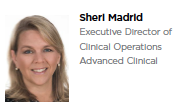 Sheri Madrid
Sheri Madrid
Executive Director of Clinical Operations
Advanced Clinical
Rare Disease Patient Advocates
Patients and patient advocacy groups play a central role in driving new and innovative products to the forefront of research. Many rare disease patient groups and communities are highly active, and work closely with industry leaders to guide decision-making on behalf of patients and families impacted by rare diseases. As a CRO working in rare disease research, we see first-hand how strong relationships between patients, patient advocacy groups, and sponsors have a positive impact on progress towards better treatment options.
 Cheryle Evans
Cheryle Evans
Senior VP, Clinical & Medical Operations
Advanced Clinical
Logistical Challenges
Some of the biggest challenges that come to mind as it pertains to the clinical research of new rare disease treatments include connecting patients to sites versus sites to patients, training and working with research-naive sites, geographical challenges, regulatory complexities, and clinical supply logistics in developing countries and regions. Many patients with genetic disorders may be undiagnosed and skeptical of the clinical research process, so there is a heightened need for education, training, and clear communication to recruit and engage patients and sites effectively.
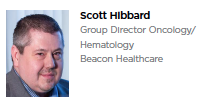 Scott Hibbard
Scott Hibbard
Group Director Oncology/Hematology
Beacon Healthcare
Addressing Rare Disease Challenges
More than 40% of rare disease patients are misdiagnosed at least once, with many spending years trying to land on a diagnosis. Comprehensive awareness campaigns must be deployed to ensure fast diagnosis and assure the right specialist/team is on board as soon as possible.
The small pool of patients with rare disease is a challenge in the clinic, and affects pricing and access once approved. With the high price tags needed to cover R&D costs, payers are no longer taking a back seat when allowing access to new treatments and looking for risk-sharing strategies to mitigate cost of therapy.
Advocacy Group Alliances
Working with advocacy groups is paramount in the rare disease setting to drive education, acceptance, uptake, and aid in gaining formulary access. Timing is critical as the market becomes more competitive and should include advocacy alignment as early as mid-Phase II.
Many times, when a company introduces a new treatment in rare disease, it may be relatively new to the therapeutic area and may lack the depth and breadth of expertise needed to successfully launch therein. The more rare the condition, the less prior knowledge exists to draw from. Finding the right, high science-minded and rare disease-focused partners will be essential for a successful launch.
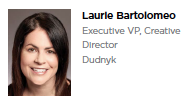 Laurie Bartolomeo
Laurie Bartolomeo
Executive VP, Creative Director
Dudnyk
A Patient-First Approach
Finding patients remains one of the greatest challenges we face in the rare disease space and requires us to continually pursue innovative methods for reaching patients and families desperately in need of effective treatment. Additionally, with the promise of cutting-edge treatments on the immediate horizon, the need for accurate and timely diagnoses is more critical than ever.
A patient-first approach is absolutely critical when companies interact with rare disease communities. Taking the time to listen and understand and, ultimately, deliver authentic programs that support patients and their families should be the primary goal. Demonstrating real and tangible value is important in all marketing efforts, but absolutely crucial in these low-volume, high-cost markets.
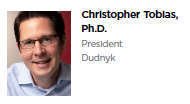 Christopher Tobias, Ph.D.
Christopher Tobias, Ph.D.
President
Dudnyk
Patients and Patient Groups
Patient and patient groups need to be vocal, join rare disease communities, and personally participate. These are the best ways to ensure access to new groundbreaking treatments. This can be accomplished through participation at FDA advisory committee meetings that review new drugs for approval, advocating in congressional meetings to increase funding for rare disease research, and by joining advocacy groups and social communities to ensure the voices and needs of patients and families are strongly heard throughout the biotech sector, governmental agencies, and Congress.
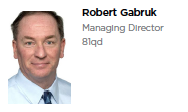 Robert Gabruk
Robert Gabruk
Managing Director
81qd
Early Diagnosis Is Key
Rare diseases present challenges to not only patients, but also their families and physicians. An early, accurate diagnosis is crucial to getting the patient the care they so desperately need. However, most companies focused on rare disorders agree that oftentimes, it takes several years for a patient with a rare disease to receive a proper diagnosis. This forces the undiagnosed (or misdiagnosed) patient onto a long, arduous, and expensive journey.
Engaging on the Front Lines
Innovative applications of AI and predictive analytics are increasingly being adopted to leverage real-world, patient-level data. The solutions help to identify yet-to-be diagnosed patients and the clinicians who treat them to help facilitate earlier diagnosis and treatment. To improve this process, one must go beyond finding patients by identifying and engaging with the community-based clinicians who influence the care of patients through their clinical networks.
~~~~~~~~~~~~~~~~~~~~~~~~~
Rare in the Square
Global Genes, one of the world’s leading rare disease advocacy organizations, hosted its third annual Rare in the Square at this year’s J.P. Morgan’s Healthcare Conference in San Francisco. Set in Union Square, Rare in the Square is a unique networking location that provides an opportunity for rare disease investors, industry partners, patient community leaders, and rare disease influencers to meet and converse throughout the conference week.
“The focus on rare disease innovation and investment continues to increase at the J.P. Morgan Healthcare Conference and within the life-sciences sector," says Nicole Boice, founder and CEO of Global Genes. “This focus is creating increased opportunities for the development of rare disease therapies, and bringing hope to millions of rare disease patients around the world. This is an important time for the rare community. Patient advocates are becoming active partners in progress, and helping to advance rare disease drug development like never before."
In 2019, Global Genes celebrates is 10th anniversary and will once again host its Annual Rare Patient Advocacy Summit in Anaheim in October.
~~~~~~~~~~~~~~~~~~~~~~~~~
Rare Disease Day 2019
The theme for this year’s Rare Disease Day, which takes place on Feb. 28, 2019, is Bridging Health and Social Care. With more than 300 million people globally struggling with a rare disease, having better coordinated health and social care is a key priority.
Organizers are encouraging broad involvement, such as organizations becoming a friend of Rare Disease Day, hosting an event, uploading a photo or video to share a story, downloading the Rare Disease Day logo for use in event material, or simply showing support for the campaign with #ShowYourRare on Facebook frame or twibbon.
This is the 12th edition of Rare Disease Day, which was launched by EURORDIS and its Council of National Alliances in 2008. The United States joined in 2009 and in 2017 and 2018 there was participation by more than 90 countries worldwide.
Source: rarediseaseday.org
~~~~~~~~~~~~~~~~~~~~~~~~~
Orphan Drug Exclusivity Working As Intended
Orphan exclusivity did not inappropriately prevent generics and biosimilars from entering the market. Instead, the lack of generic competitors can be credited to their prospective return on investment being too small. This is the finding of a new report commissioned by the National Organization for Rare Disorders (NORD) and published by the IQVIA Institute, demonstrating that the seven-year market exclusivity granted to drugs designated under the Orphan Drug Act of 1983.
Other findings:
Adding an orphan indication to an on-market drug does not correlate with a higher than average price increase. The average price of therapies grew at a slower pace in 8 out of the 10 years following the addition of an orphan indication to the label.
Of the 503 approved therapies with an orphan indication at the time the research was conducted, 217 are no longer covered by orphan exclusivity or patent protection. Of these 217 therapies, 116 of them have generic or biosimilar competition.
Since 2009, on-market common-disease drug prices have grown more every year, on average, than orphan drugs.
Source: NORD

















